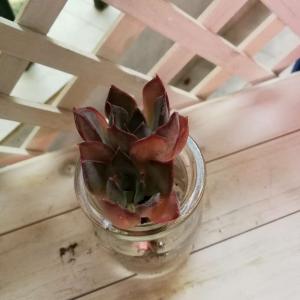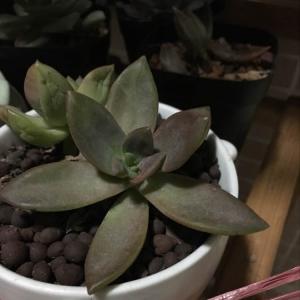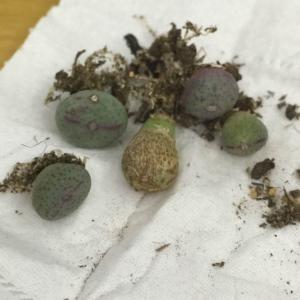文章
Miss Chen
2017年08月14日

Annual bread-seed or lettuce-leaf poppies (Papaver somniferum) produce flat, tissue-papery blooms in shades of pink, red, purple and white. They grow 4 to 5 feet tall, with lush, pale green foliage that stands upright from the stalk. These are the same poppies that are the source of opium and it is illegal in the United States to grow them for that purpose.

Colors
While specific strains, such as Lauren's Grape (purple), Danish Flag (deep orange with white feathery centers) and peony poppies (multiple petals in jewel tones) are offered in commercial seed packages, grocery-store poppy seeds grow just as well, although in limited colors and types. Most produce a single pink poppy flower.
Timing
Annual poppies grow best if they get a period of cold, so it is often recommended that they be planted in fall or sprinkled on the snow. However, especially in areas with wet winters and cold springs, planting in mid-February yields better results.
Planting
Scatter the seeds on the ground and do not cover them, as sunlight is needed for germination. If your climate is dry, keep the seeds moist with a fine spray from the hose until they come up. When the plants are about 3 inches tall, thin out any crowded clumps.
Gathering Seeds
Poppy flowers last only a few days. After the petals drop, the poppy seed heads will begin to dry. Leave them on the plant until the stalks have turned beige and the slits at the top of the poppy pod have opened to release the seeds. Gather the heads and let them dry completely, then shake out the seeds.

Replanting
Many of the seeds will fall to the ground and plant themselves, but save some seeds to scatter again in spring, especially if the grocery-store seeds yield any unusual colors or forms that you wish to grow again.

Colors
While specific strains, such as Lauren's Grape (purple), Danish Flag (deep orange with white feathery centers) and peony poppies (multiple petals in jewel tones) are offered in commercial seed packages, grocery-store poppy seeds grow just as well, although in limited colors and types. Most produce a single pink poppy flower.
Timing
Annual poppies grow best if they get a period of cold, so it is often recommended that they be planted in fall or sprinkled on the snow. However, especially in areas with wet winters and cold springs, planting in mid-February yields better results.
Planting
Scatter the seeds on the ground and do not cover them, as sunlight is needed for germination. If your climate is dry, keep the seeds moist with a fine spray from the hose until they come up. When the plants are about 3 inches tall, thin out any crowded clumps.
Gathering Seeds
Poppy flowers last only a few days. After the petals drop, the poppy seed heads will begin to dry. Leave them on the plant until the stalks have turned beige and the slits at the top of the poppy pod have opened to release the seeds. Gather the heads and let them dry completely, then shake out the seeds.

Replanting
Many of the seeds will fall to the ground and plant themselves, but save some seeds to scatter again in spring, especially if the grocery-store seeds yield any unusual colors or forms that you wish to grow again.
1
1
文章
Erin
2017年08月10日

#兰花 常用分株、播种及组织培养兰花。常见的以分株繁殖为主,兰花分株兰花春秋两季均可进行,兰花一般每隔2—3年分株一次。
分株后的每丛至少要保存5个连结在一起的假球茎,而这些假球茎上至少有3个叶片生长健壮。分株前要减少灌水,使盆土较干。出盆时,除去根部旧土壤,以清水洗净,晾2—3小时。待根部发白微蔫后,再以利刀在假球茎间切割分株,切口处涂以草木灰或硫磺粉防腐。

栽种兰花适合采用富含腐殖质的砂质壤土。花盆以瓦盆为好,有利植株生长。盆底排水孔应比一般花盆为大,以有3—4个底孔为宜,花盆的大小与深浅依植株大小而定。
上盆时,先以碎瓦片覆在盆底孔上,再铺上粗石子,约占盆深度1/5—1/4,再放粗粒土及少量细土,使盆中部的土隆起后栽植。栽时将根散开,植株应稍倾斜。盆土随填随舒展其根,并摇动花盆数次,同时用手指塞紧压实。
栽植深度以将假球茎刚刚埋人土中为度。栽植后盆面略呈拱形,盆边缘留2厘米沿口,最后用细喷壶喷水2—3次,置阴处10—15天。附生兰需要分株时,先将根修好,适当剪开,然后用泥炭藓、蕨根、残叶等栽培材料包在根系之外,种入漏空花盆中。然后浇水,保持一定湿度。
场地选择:要求四周空旷,通风良好,并靠近水面,空气湿润,无煤烟污染。场地的西南面,可种 蕙兰常绿阔叶树,郁闭度应在0.7左右,这样可减少午后阳光照射,调节湿度与温度。
分株后的每丛至少要保存5个连结在一起的假球茎,而这些假球茎上至少有3个叶片生长健壮。分株前要减少灌水,使盆土较干。出盆时,除去根部旧土壤,以清水洗净,晾2—3小时。待根部发白微蔫后,再以利刀在假球茎间切割分株,切口处涂以草木灰或硫磺粉防腐。

栽种兰花适合采用富含腐殖质的砂质壤土。花盆以瓦盆为好,有利植株生长。盆底排水孔应比一般花盆为大,以有3—4个底孔为宜,花盆的大小与深浅依植株大小而定。
上盆时,先以碎瓦片覆在盆底孔上,再铺上粗石子,约占盆深度1/5—1/4,再放粗粒土及少量细土,使盆中部的土隆起后栽植。栽时将根散开,植株应稍倾斜。盆土随填随舒展其根,并摇动花盆数次,同时用手指塞紧压实。
栽植深度以将假球茎刚刚埋人土中为度。栽植后盆面略呈拱形,盆边缘留2厘米沿口,最后用细喷壶喷水2—3次,置阴处10—15天。附生兰需要分株时,先将根修好,适当剪开,然后用泥炭藓、蕨根、残叶等栽培材料包在根系之外,种入漏空花盆中。然后浇水,保持一定湿度。
场地选择:要求四周空旷,通风良好,并靠近水面,空气湿润,无煤烟污染。场地的西南面,可种 蕙兰常绿阔叶树,郁闭度应在0.7左右,这样可减少午后阳光照射,调节湿度与温度。
3
1
文章
Dummer. ゛☀
2017年08月09日

Family - Liliaceae
Stems - To +30cm tall, erect, simple to branching above, glabrous, glaucous, fleshy, herbaceous, from rhizomes and thickened roots.
Leaves - Alternate, perfoliate, rounded at base, acute at apex, entire, glabrous, with 3-5 prominent parallel veins, to +8cm long, 3cm broad.
Inflorescence - Single flower terminating stems. Pedicel to 1.5cm long, glabrous. Flowers pendant.
Flowers - Tepals 6, yellow, spirally curled, linear-oblong, entire, acute, glabrous, to +4cm long, 6mm broad. Stamens 6, erect. Filaments compressed, 5mm long, white, glabrous. Anthers 1.6cm long, yellow. Ovary superior, 3-sided, 5mm long, 4mm broad, 3-valved, 3-locular. Placentation axile. Ovules many. Styles 3, connate in basal 1/2, to 1.3cm long, yellowish-green, glabrous. Stigmas slightly curved at apex.
Flowering - April - May.
Habitat - Rich rocky woods, steep slopes, alluvial valleys.
Origin - Native to U.S.
Other info. - This striking species is common throughout Missouri except in some of the prairie areas. This species is one of the earlier plants to bloom in the spring. Another species, U. sessifolia L. is similar but has sessile leaves, not perfoliate leaves.
The roots and young shoots of U. grandiflora can be eaten. Traditionally, the plant was used to treat sore muscles, backaches, toothaches, and swelling.
This species grows well from seed and should be cultivated more.
Stems - To +30cm tall, erect, simple to branching above, glabrous, glaucous, fleshy, herbaceous, from rhizomes and thickened roots.
Leaves - Alternate, perfoliate, rounded at base, acute at apex, entire, glabrous, with 3-5 prominent parallel veins, to +8cm long, 3cm broad.
Inflorescence - Single flower terminating stems. Pedicel to 1.5cm long, glabrous. Flowers pendant.

Flowers - Tepals 6, yellow, spirally curled, linear-oblong, entire, acute, glabrous, to +4cm long, 6mm broad. Stamens 6, erect. Filaments compressed, 5mm long, white, glabrous. Anthers 1.6cm long, yellow. Ovary superior, 3-sided, 5mm long, 4mm broad, 3-valved, 3-locular. Placentation axile. Ovules many. Styles 3, connate in basal 1/2, to 1.3cm long, yellowish-green, glabrous. Stigmas slightly curved at apex.

Flowering - April - May.
Habitat - Rich rocky woods, steep slopes, alluvial valleys.
Origin - Native to U.S.
Other info. - This striking species is common throughout Missouri except in some of the prairie areas. This species is one of the earlier plants to bloom in the spring. Another species, U. sessifolia L. is similar but has sessile leaves, not perfoliate leaves.

The roots and young shoots of U. grandiflora can be eaten. Traditionally, the plant was used to treat sore muscles, backaches, toothaches, and swelling.
This species grows well from seed and should be cultivated more.
0
0
文章
Colour_
2017年08月08日
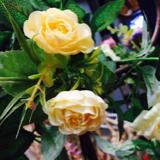
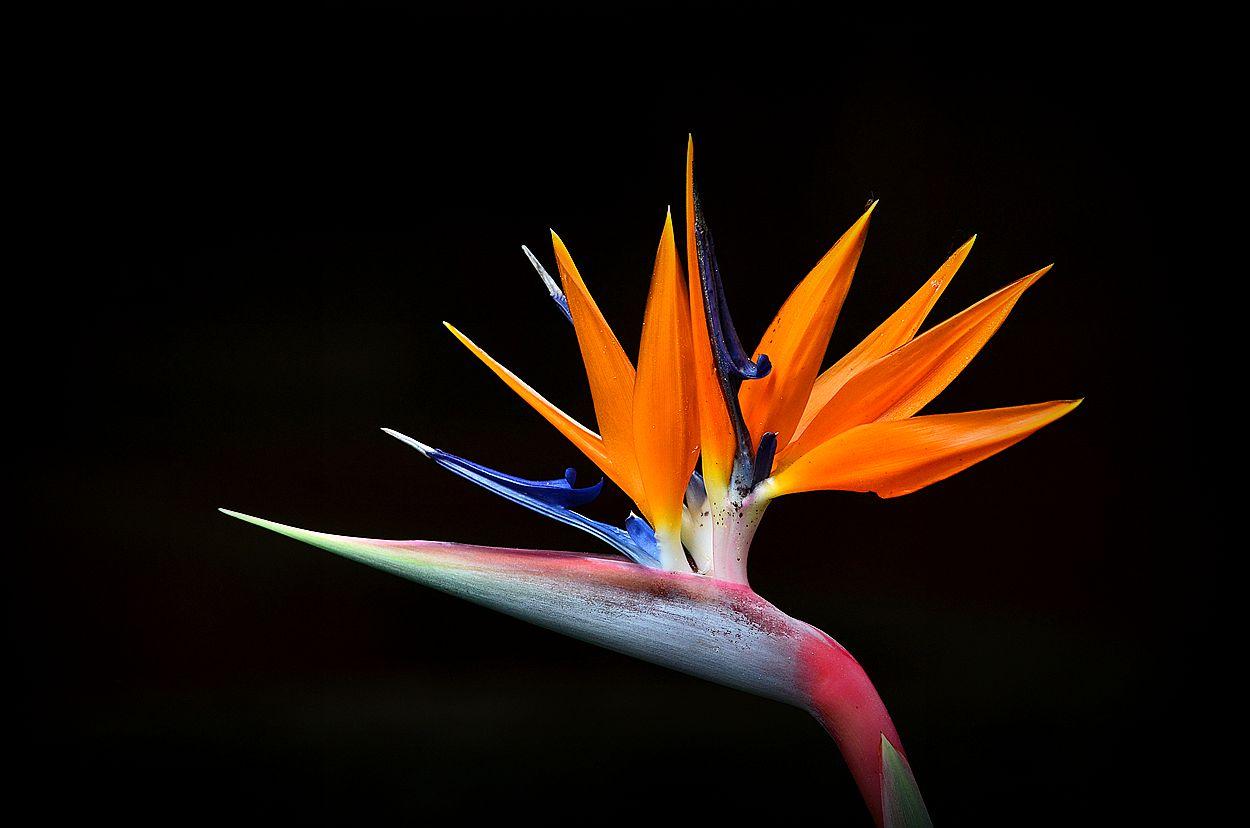
①保持适宜温度。鹤望兰最佳生长温度为15℃~25℃,盛夏高温处在半休眠状态,要防止烈日曝晒,冬天需在室内或温室5以上温度越冬。
②#鹤望兰 喜光照。冬天需保暖,成苗在春、夏、秋三季中可放置在室外露天栽培。
③注意适当浇水。浇水应按季节变化而定,冬天盆土可偏干一些,春、秋盆土需保持一定湿润,夏天高温时,可增加浇水量,但盆土不宜经常过湿,排水要通畅。空气干燥时,可在叶面或地上洒些水,以增加空气湿度。
④合理施肥。5月起,每15天需施氮、磷结合的薄肥1次,入秋后再增施1~2次,越冬期间应停止施肥。
1
3
文章
Colour_
2017年08月08日

#报春花 通常采用种子繁殖,在采集种子与播种中应注意:
①采种。报春花在5-6月结籽,结实期间要注意通风,同时湿度不宜过大。由于种子成熟期不一,需边成熟边采收,采下的种子切忌放在太阳下暴晒,以免丧失种子发芽率,而应放在阴处晾干。
②播种。报春花播种可在8-9月份间进行,种子发芽温度为15℃-20℃。播种代用浅盆与疏松、排水良好的细土,由于种子细小,播种后需压实,不必覆土。浇水采用浸盆法,让水从盆底孔慢慢地往上渗到盆面,使盆土湿润,然后盖上玻璃,保湿,置于半阴处,约2周便可发芽,此时应揭去玻璃。
ps:报春花花语:青春的快乐和悲伤,不悔。
报春花由于是春天的象征,所以被人们用来比作每个人的必经阶段—青春期,所以报春花的花语就是青春的快乐和悲伤,而报春花总是在万物都没有复苏的时候开花,叫醒了世间万物然后独自凋谢,但是年复一年皆如此,所以报春花还有一个花语那就是不悔!
报春花西方花语寓意:初恋、新婚燕尔、不渝的爱、(白色花)精力充沛、(红色花)心在燃烧、(紫色花)智慧等。
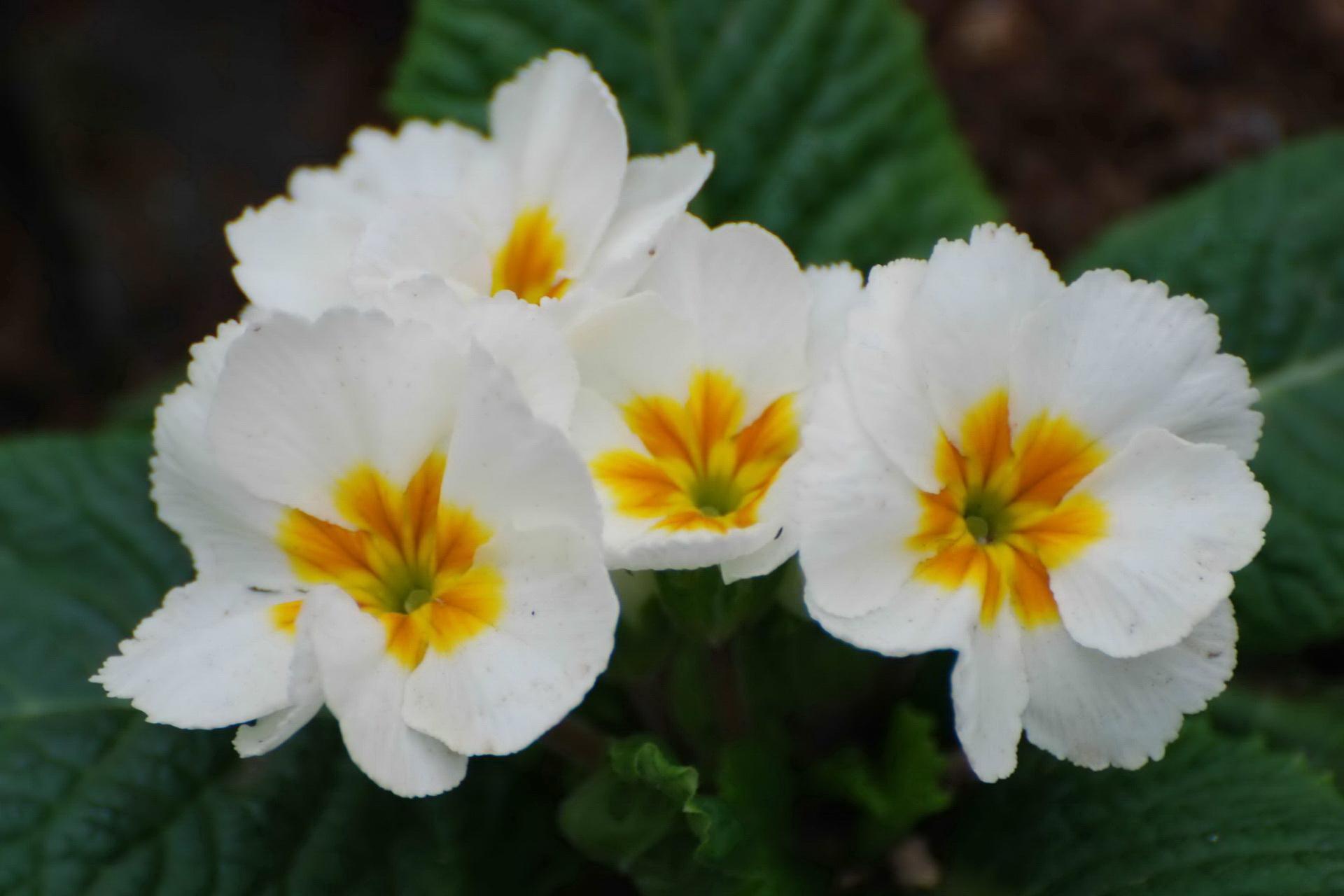
①采种。报春花在5-6月结籽,结实期间要注意通风,同时湿度不宜过大。由于种子成熟期不一,需边成熟边采收,采下的种子切忌放在太阳下暴晒,以免丧失种子发芽率,而应放在阴处晾干。
②播种。报春花播种可在8-9月份间进行,种子发芽温度为15℃-20℃。播种代用浅盆与疏松、排水良好的细土,由于种子细小,播种后需压实,不必覆土。浇水采用浸盆法,让水从盆底孔慢慢地往上渗到盆面,使盆土湿润,然后盖上玻璃,保湿,置于半阴处,约2周便可发芽,此时应揭去玻璃。
ps:报春花花语:青春的快乐和悲伤,不悔。
报春花由于是春天的象征,所以被人们用来比作每个人的必经阶段—青春期,所以报春花的花语就是青春的快乐和悲伤,而报春花总是在万物都没有复苏的时候开花,叫醒了世间万物然后独自凋谢,但是年复一年皆如此,所以报春花还有一个花语那就是不悔!
报春花西方花语寓意:初恋、新婚燕尔、不渝的爱、(白色花)精力充沛、(红色花)心在燃烧、(紫色花)智慧等。

0
0
文章
Miss Chen
2017年08月08日


Jade plants (Crassula ovata) can be grown from a single leaf and end up over 5 feet tall. They have fleshy branches and rounded, glossy leaves. As succulents, they require little water but grow best in bright light with some direct sunshine. Jade plants lose older leaves naturally but an increase in the rate of leaf loss is often the first sign of a problem.
Underwatering
Jade plants that are not receiving enough water often shed their older leaves. If the lower leaves on your plant are shriveling up and then falling off, check its soil. If it is completely dry, water your plant thoroughly. Water a jade plant every time the top inch of its soil is completely dry. Jade plants add leaves and shoots during the summer and need more water during the hot summer months.
Overwatering
Succulent jade plants are vulnerable to rot and must never be left with their pot standing in water. Check your plant's soil if its leaves turn yellow and start to drop off. Do not apply any more water until it has dried out completely. Remove the plant from its pot if you notice any soft sections on the trunk or branches. Wash all the soil off the roots and place it on a windowsill for a week. Cut off any branches or roots that are soft and repot in cactus potting mix.
Light
If your jade is losing its lower leaves at the beginning of winter this is likely to be because of low light. Move your plant closer to a window to increase light levels. Jade plants that are kept close to a window will shed leaves if they touch the glass on very hot or very cold days. Keep the plant a few inches back from the glass.
Temperature
Keep jade plants above 50 degrees Fahrenheit during the winter as cold temperatures will damage the leaves. Frost will kill your jade plant completely. Jade plants will shed leaves if they are placed in a cold draft or close to a radiator. A sudden change in temperature caused by a move will also cause leaf drop. The leaves will grow back once your plant has adapted to its new surroundings.

Leaf Shine
Never use leaf shine products on jade plants as it will cause all their leaves to turn yellow and fall off. Household chemicals and cleaners have a similar effect if they touch the leaves. Jade plant leaves shine naturally if they are dust free and the plant is healthy.
Pests
Jade plants are vulnerable to infestations of mealy bugs and scale insect. Mealies and scale make jade leaves sticky and can encourage the growth of molds. They also cause leaf drop and deformed leaves. Treat mealies and scale by dabbing them with a paintbrush dipped in a 70 percent solution of rubbing alcohol.
0
0
文章
Colour_
2017年08月08日

夏天到啦,养殖#君子兰 的花友又该感慨“君子兰烂根的季节到了!”亲,您知道为什么君子兰容易在夏天烂根吗?君子兰的最佳生长温度为5℃-25℃,在高温高湿的夏季,若养护不当,极易烂根。那么君子烂根后,我们该怎样处理呢?我们一起往下阅读了解一下吧!

君子兰烂根的处理办法:
如果花友发现自己的君子兰烂根了,先把烂根君子兰从盆内磕出,去土,将烂根剪除,用清水洗根后,再用5‰的高锰酸钾水溶液涂抹在烂根处(也可以用其他方式消毒,比如草木灰也可以),然后用报纸或白纸包裹全部叶片,露出根部,将根部置于阳光下晒半小时。
经过处理后,如果君子兰只有少数根烂掉了,可直接栽到经过消毒的营养土中,半月内少浇水,一个月之后可恢复生长,如果大部分根烂掉了,则应将其栽在盛细沙的盆内,并置于阴凉处,促进其萌生新根。约一个半月后新根长出,更换营养土,即可进行正常养护管理,也可以用其他介质,比如珍珠岩,水苔等也是可以的。
在夏季,对君子兰的养护除采取遮阴、通风、降温等措施,还应做到不施肥或少施氮肥,控制浇水,不干不浇等控制植株生长的方法。
君子兰的养护:
1、用土。君子兰喜疏松肥沃的中性或弱酸性腐殖质土,栽培用土可按腐殖质土65%、净沙20%、细草灰15%混合而成。或者到山上挖的石缝中的土,松树底下的松针土,或者落叶松叶子沤烂做成的土,也可以是年久腐烂的树叶,草沫都可以,总的原则是土壤含营养丰富,浇水则透为最好。
2、浇水。君子兰喜中性水,干净、无污染的自来水、井水、河水等都可以用来浇灌,但由于新鲜的自来水和井水的水温低于土温,且含有一些杂质,应放置1-2天后再使用。至于浇水这里面也有不少的讲究。对于君子兰小苗来说最好的方法是用喷壶喷灌。将喷嘴向上往叶子上喷,这样做的好处是除了达到浇花的目的外,还能洗尘,同时在叶面上留有雾珠,保证叶面有一定的湿度,在阳光下水分蒸发可降低叶表面温度,防止日灼病。
但是对正在开花的君子兰就不能采用喷灌方式浇水,以防水进入叶鞘造成烂心,对于正处花期的君子兰只能向盆内浇水。那什么时间浇、浇多少水才合适呢?这主要取决于君子兰所处的环境温度。总的浇水原则是“见湿见干,不干不浇,干透浇透”。浇透就是使君子兰的全部根系都处于相同的湿度中。判断水是否浇透,不能只根据盆底是否有水流出来决定。因为有时盆土干后板结,缩成一团,浇水后,水分很快从盆壁流到盆底,并从底孔淌出来。而盆土的中心部分连一点点水都未接触到,如果这时候停止浇水,会使君子兰叶子萎蔫,正在窜箭时形成夹箭。

君子兰烂根的处理办法:
如果花友发现自己的君子兰烂根了,先把烂根君子兰从盆内磕出,去土,将烂根剪除,用清水洗根后,再用5‰的高锰酸钾水溶液涂抹在烂根处(也可以用其他方式消毒,比如草木灰也可以),然后用报纸或白纸包裹全部叶片,露出根部,将根部置于阳光下晒半小时。
经过处理后,如果君子兰只有少数根烂掉了,可直接栽到经过消毒的营养土中,半月内少浇水,一个月之后可恢复生长,如果大部分根烂掉了,则应将其栽在盛细沙的盆内,并置于阴凉处,促进其萌生新根。约一个半月后新根长出,更换营养土,即可进行正常养护管理,也可以用其他介质,比如珍珠岩,水苔等也是可以的。
在夏季,对君子兰的养护除采取遮阴、通风、降温等措施,还应做到不施肥或少施氮肥,控制浇水,不干不浇等控制植株生长的方法。
君子兰的养护:
1、用土。君子兰喜疏松肥沃的中性或弱酸性腐殖质土,栽培用土可按腐殖质土65%、净沙20%、细草灰15%混合而成。或者到山上挖的石缝中的土,松树底下的松针土,或者落叶松叶子沤烂做成的土,也可以是年久腐烂的树叶,草沫都可以,总的原则是土壤含营养丰富,浇水则透为最好。
2、浇水。君子兰喜中性水,干净、无污染的自来水、井水、河水等都可以用来浇灌,但由于新鲜的自来水和井水的水温低于土温,且含有一些杂质,应放置1-2天后再使用。至于浇水这里面也有不少的讲究。对于君子兰小苗来说最好的方法是用喷壶喷灌。将喷嘴向上往叶子上喷,这样做的好处是除了达到浇花的目的外,还能洗尘,同时在叶面上留有雾珠,保证叶面有一定的湿度,在阳光下水分蒸发可降低叶表面温度,防止日灼病。
但是对正在开花的君子兰就不能采用喷灌方式浇水,以防水进入叶鞘造成烂心,对于正处花期的君子兰只能向盆内浇水。那什么时间浇、浇多少水才合适呢?这主要取决于君子兰所处的环境温度。总的浇水原则是“见湿见干,不干不浇,干透浇透”。浇透就是使君子兰的全部根系都处于相同的湿度中。判断水是否浇透,不能只根据盆底是否有水流出来决定。因为有时盆土干后板结,缩成一团,浇水后,水分很快从盆壁流到盆底,并从底孔淌出来。而盆土的中心部分连一点点水都未接触到,如果这时候停止浇水,会使君子兰叶子萎蔫,正在窜箭时形成夹箭。
0
0
文章
Colour_
2017年08月08日

#宫灯长寿花 的养殖方法:

土壤选择:宫灯长寿花虽不甚择土,但在重黏土中易烂根,而在疏松肥沃的微酸性沙质壤土中生长最佳。家庭盆栽宜用腐叶土与菜园表土等量混合后,再加5%至8%的沙作培养土。种植时加点骨粉或氮磷钾复合肥作基肥。
浇水要点:宫灯长寿花为肉质动物,体内含水分多,较耐旱而怕涝,在高层楼房空气干燥的条件下,生长良好。不可浇水过多,每2-3天浇1次水,盆土以潮湿偏干为好。假如盆土过温,易惹起根腐朽。浇水把握“见干见湿、浇则浇透”冬季应增加浇水,中止施肥。春秋两季3天左右见盆土干后浇一次透水,常保持稍润即可。夏季宜少浇水,5天至7天浇一次为好,置于室外的长寿花,雨季要避雨淋,水多易烂根落叶甚至死亡。
光照要求:宫灯长寿花对光照请求不严,全日照、半日照和散射光照条件下均能生长优良。宫灯长寿花喜阳光充足的环境,除盛夏中午宜稍荫蔽外,其余时间都要放在向阳处,每天至少要能见4小时以上的直射光才能健壮生长。楼房阳台每半月要将花盆转动180度,使之受光均匀,避免偏冠,降低观赏价值。半阴处虽也能生长,但茎细叶薄花少色淡,远不如向阳处繁茂。如过阴不仅易掉叶无花,就是已开花的植株置于阴处,也会花色变暗淡,继而花脱落枯萎。
温度要求:宫灯长寿花最适宜生长的温度是15℃至25℃,高于30℃生长迟缓,进入半休眠状态,也就是说夏季长寿基本是不长的,低于10℃生长停滞,低于8℃叶色发红,花期推迟,0℃以下则易冻死。
冬季酷热时要留意透风、遮荫,防止强阳光直射。冬季入温室或放室外向阳处,温度坚持10℃以上,最低温度不能低于5℃,温度低时叶片轻易发红。因此要养好长寿花,须为其创造一个冬暖夏凉的小环境,盛夏的中午要避强光暴晒,置于散射光充足的半阴处,如大树下、屋檐下或北向阳台,特别要注意通风降温,可向附近地面洒水,但不能洒在植株上。立秋后,从8月下旬到9月上旬,可逐步见阳光,10月起则应多见阳光,促其从营养生长向生殖生长转化。当最低气温降至10℃左右时,移入室内置于南向或西向窗台前,使之多见阳光,保持夜间10℃,白天15℃至18℃,12月便可开花。
施肥要点:宫灯长寿花喜肥,幼苗上盆定植半月或老株分株半月后可施2次至3次以氮为主的液肥,促长茎叶,花后可施一次以氮为主的液肥,促其复壮。其余时间除夏季停施外,只能施氮磷钾复合肥,施肥时勿将肥弄在叶子上,否则叶片易腐烂,如不小心弄脏叶面,应用水冲洗掉。长寿花的花期长,要打破花期不施肥的戒律,每月施一次稀薄的氮磷钾肥或0.2%的磷酸二氢钾溶液,使后期花不致因缺肥而变小色淡。
病虫害防治:主要有白粉病和叶枯病危害,可用65%代森锌可湿性粉剂600倍液喷洒。虫害有介壳虫和蚜虫危害叶片和嫩梢,可用40%乐果乳油1000倍液喷杀防治。无论地栽或盆栽,块茎种植前均需进行土壤消毒,以防土壤传染病害。


土壤选择:宫灯长寿花虽不甚择土,但在重黏土中易烂根,而在疏松肥沃的微酸性沙质壤土中生长最佳。家庭盆栽宜用腐叶土与菜园表土等量混合后,再加5%至8%的沙作培养土。种植时加点骨粉或氮磷钾复合肥作基肥。
浇水要点:宫灯长寿花为肉质动物,体内含水分多,较耐旱而怕涝,在高层楼房空气干燥的条件下,生长良好。不可浇水过多,每2-3天浇1次水,盆土以潮湿偏干为好。假如盆土过温,易惹起根腐朽。浇水把握“见干见湿、浇则浇透”冬季应增加浇水,中止施肥。春秋两季3天左右见盆土干后浇一次透水,常保持稍润即可。夏季宜少浇水,5天至7天浇一次为好,置于室外的长寿花,雨季要避雨淋,水多易烂根落叶甚至死亡。
光照要求:宫灯长寿花对光照请求不严,全日照、半日照和散射光照条件下均能生长优良。宫灯长寿花喜阳光充足的环境,除盛夏中午宜稍荫蔽外,其余时间都要放在向阳处,每天至少要能见4小时以上的直射光才能健壮生长。楼房阳台每半月要将花盆转动180度,使之受光均匀,避免偏冠,降低观赏价值。半阴处虽也能生长,但茎细叶薄花少色淡,远不如向阳处繁茂。如过阴不仅易掉叶无花,就是已开花的植株置于阴处,也会花色变暗淡,继而花脱落枯萎。
温度要求:宫灯长寿花最适宜生长的温度是15℃至25℃,高于30℃生长迟缓,进入半休眠状态,也就是说夏季长寿基本是不长的,低于10℃生长停滞,低于8℃叶色发红,花期推迟,0℃以下则易冻死。
冬季酷热时要留意透风、遮荫,防止强阳光直射。冬季入温室或放室外向阳处,温度坚持10℃以上,最低温度不能低于5℃,温度低时叶片轻易发红。因此要养好长寿花,须为其创造一个冬暖夏凉的小环境,盛夏的中午要避强光暴晒,置于散射光充足的半阴处,如大树下、屋檐下或北向阳台,特别要注意通风降温,可向附近地面洒水,但不能洒在植株上。立秋后,从8月下旬到9月上旬,可逐步见阳光,10月起则应多见阳光,促其从营养生长向生殖生长转化。当最低气温降至10℃左右时,移入室内置于南向或西向窗台前,使之多见阳光,保持夜间10℃,白天15℃至18℃,12月便可开花。
施肥要点:宫灯长寿花喜肥,幼苗上盆定植半月或老株分株半月后可施2次至3次以氮为主的液肥,促长茎叶,花后可施一次以氮为主的液肥,促其复壮。其余时间除夏季停施外,只能施氮磷钾复合肥,施肥时勿将肥弄在叶子上,否则叶片易腐烂,如不小心弄脏叶面,应用水冲洗掉。长寿花的花期长,要打破花期不施肥的戒律,每月施一次稀薄的氮磷钾肥或0.2%的磷酸二氢钾溶液,使后期花不致因缺肥而变小色淡。
病虫害防治:主要有白粉病和叶枯病危害,可用65%代森锌可湿性粉剂600倍液喷洒。虫害有介壳虫和蚜虫危害叶片和嫩梢,可用40%乐果乳油1000倍液喷杀防治。无论地栽或盆栽,块茎种植前均需进行土壤消毒,以防土壤传染病害。

1
3
文章
Dummer. ゛☀
2017年08月07日

Also known as Garlic Mustard, this biennial spring wildflower smells remarkably like garlic when the stems are crushed.
Identification
The elongated heart-shaped stalked leaves are 5 to 8cm long (excluding the stalks) and bright yellowish green in early spring, darkening somewhat as the year advances; they are toothed and look like stinging nettles. In their second year the plants grow to 30cm to 120cm tall.
The white flowers appear in small clusters in spring and early summer. As with other members of the Cabbage family (Brassicaceae) each flower has four petals; they are oblong and 4 to 8mm long by 2 to 3mm wide. The fruit (seedpod) is a slender upright four-sided silique some 4 to 5.5cm long and containing two rows of black seeds that are released once the pod dries out and splits open.
Distribution
Alliaria petiolata is widespread and common throughout Britain and Ireland, and is found throughout Mainland Europe and in Africa and India. In North America it is an invasive alien plant.
Habitat
Appropriately named, this is a plant of hedgerows, but in shaded places you will also find it lining the banks of ditches and streams.
Blooming Times
The best of the flowers of Garlic Mustard or Jack-by-the-Hedge appear in April and early May, but you can occasionally find a few blooms right through until August.
Uses
Jack-by-the-Hedge is edible and, if collected when young, the leaves make an excellent addition to salads, sauces and other dishes.
Identification
The elongated heart-shaped stalked leaves are 5 to 8cm long (excluding the stalks) and bright yellowish green in early spring, darkening somewhat as the year advances; they are toothed and look like stinging nettles. In their second year the plants grow to 30cm to 120cm tall.

The white flowers appear in small clusters in spring and early summer. As with other members of the Cabbage family (Brassicaceae) each flower has four petals; they are oblong and 4 to 8mm long by 2 to 3mm wide. The fruit (seedpod) is a slender upright four-sided silique some 4 to 5.5cm long and containing two rows of black seeds that are released once the pod dries out and splits open.
Distribution
Alliaria petiolata is widespread and common throughout Britain and Ireland, and is found throughout Mainland Europe and in Africa and India. In North America it is an invasive alien plant.

Habitat
Appropriately named, this is a plant of hedgerows, but in shaded places you will also find it lining the banks of ditches and streams.
Blooming Times
The best of the flowers of Garlic Mustard or Jack-by-the-Hedge appear in April and early May, but you can occasionally find a few blooms right through until August.

Uses
Jack-by-the-Hedge is edible and, if collected when young, the leaves make an excellent addition to salads, sauces and other dishes.
0
0
文章
Miss Chen
2017年08月06日


Description: This perennial plant is 1½–3½' tall, branching occasionally. The ridged stems are pubescent. The alternate compound leaves are odd pinnate, and 5-9" long, with about 21-31 leaflets. The oblong leaflets are about 1½" long and 3/8" across, with smooth edges. From the upper axils of the compound leaves there occasionally develops a whorled raceme of flowers from a stout stalk. A raceme (including the stalk) is usually about 1-2" longer than the compound leaves subtending it, or about 7-11" long. A typical raceme is crowded with about 75 creamy flowers, which may have yellow or green tints. Each flower is about ¾" long and tubular-shaped, although jutting slightly upward toward the outer tip. It consists of five petals, including a curved upper hood, a lower keel, and close-fitting side petals. The blooming period occurs during the summer and lasts about 2-3 months. There is no noticeable floral scent. The flowers are replaced by stout oval pods with long pointed tips, which are held nearly erect on the stalk. The root system consists of a taproot.
Cultivation: The preference is full or partial sun and mesic conditions. Canada Milkvetch grows well on most kinds of soil, and probably fixes some nitrogen. It's a robust plant, although the foliage sometimes turns prematurely yellow. This plant has a tendency to sprawl, unless it receives support from adjacent vegetation.
Range & Habitat: The native Canada Milkvetch occurs occasionally in the northern half of Illinois, but it is rather uncommon in most areas of southern Illinois (see Distribution Map). Habitats include moist to slightly dry black soil prairies, sand prairies, typical and sandy savannas, thickets and woodland borders, moist meadows near rivers, and abandoned fields.
Faunal Associations: Primarily bumblebees visit the flowers for nectar. Other long-tongued bee visitors include honeybees and Megachile spp. (Large Leaf-Cutting Bees). Insects with shorter mouthparts have trouble reaching the nectar, nor is the pollen easy to access. Unlike many milkvetches of the Western states, the foliage of Canada Milkvetch is non-toxic and palatable to mammalian herbivores, including deer, groundhogs, rabbits, and livestock. This plant may be difficult to establish where these animals occur in abundance. The seeds may be eaten occasionally by the Wild Turkey and other upland gamebirds, as well as small rodents, such as the Thirteen-Lined Ground Squirrel; however, such observations are confined largely to the Western states, where Astragalus spp. are more abundant.
Photographic Location: The wildflower garden of the webmaster in Urbana, Illinois.
Comments: There are very few Astragalus spp. that occur in Illinois. Canada Milkvetch has a distinctive appearance on account of its size (up to 3½' tall) and abundant creamy flowers (about 75 per raceme). Some pale-flowered vetches are superficially similar in appearance, such as Vicia carolina (Carolina Vetch). However, vetches are vine-like plants with tendrils, while Canada Milkvetch is a semi-erect plant without tendrils (although it may clamber over adjacent vegetation, nonetheless). Another difference is the inflorescence: the raceme of Canada Milkvetch is whorled with about 75 flowers, while Vicia spp. have one- or two-sided racemes with fewer flowers.

0
0







